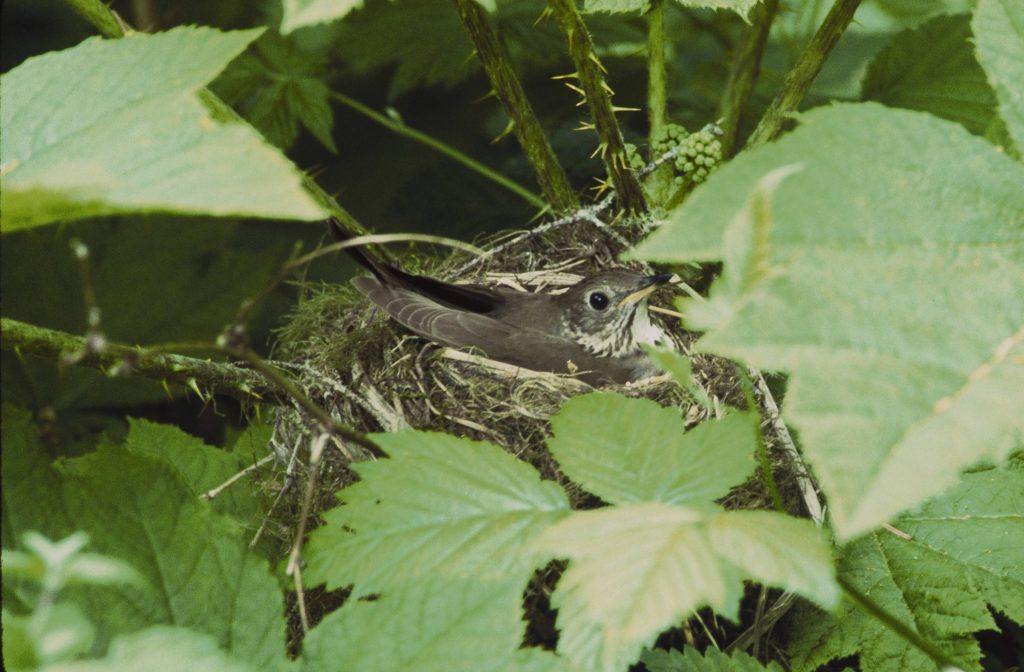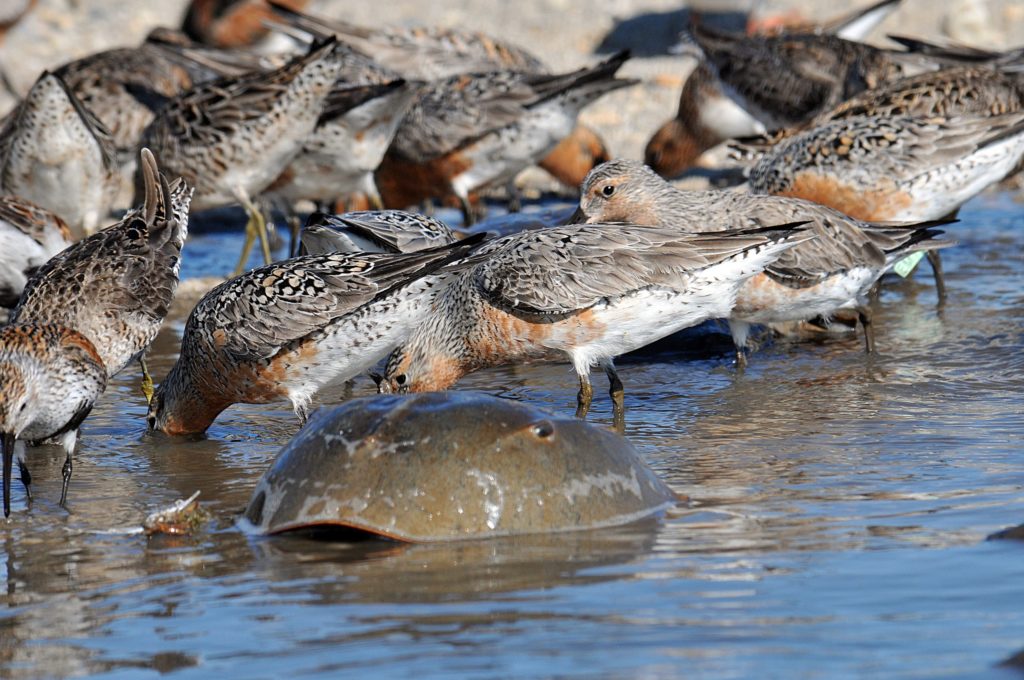Across the US, conservationists are expanding a network of radio towers that automatically record the positions of radio-tagged birds as they pass nearby.
Data from this initiative, called the Motus network, is helping scientists understand what factors influence bird declines and what it will take to stop them. In mid-2021, Mass Audubon will use the Motus network to identify where threatened American Kestrels faces the most risks and mortality after leaving Massachusetts.
Here are some other examples of recent studies that have used nanotags to change how we understand bird migration—and specifically, how birds’ health during migration influences their survival and breeding success.
Pit Stops can Make or Break a Gray-cheeked Thrush’s Migration

One study used Motus stations to link how much weight Gray-cheeked Thrushes put on at stopover sites in Colombia with their migratory schedule (and, indirectly, to their breeding success).
Gray-cheeked Thrushes stop along Colombia’s coast on their journey from their wintering range further south to their breeding grounds in boreal Canada. Massachusetts birders know them as an uncommon migrant on the ground, although their flight call is fairly frequently heard from night-migrating birds overhead.
This trend lines up with the Colombian study’s first surprising finding: many of these thrushes make direct, continuous flights to Canada from stopover sites in Colombia, instead of hopscotching through the Caribbean and North America. One bird averaged 46 miles per hour as it covered the 2100 miles between Ontario and Colombia in less than two days!
But not all thrushes have enough fat reserves to power them through these marathon flights.
Researchers analyzed the amount of fat thrushes packed on at their stopover sites, as well as the amount of time spent refueling. They found that the longer birds spent feeding on the north coast of Colombia, the earlier they arrived on their Canadian breeding grounds—allowing for a longer window to breed and raise young successfully.
Most interestingly, the researchers found that most thrushes arrived in Colombia with similar levels of fat reserves—suggesting that food availability on their Amazonian wintering grounds had less of an impact on their migratory success than their ability to refuel during stopovers in Colombia. This suggests that Gray-cheeked Thrushes face a bottleneck specifically in Colombia, and that conservation efforts [JA1] on their breeding grounds or wintering grounds could be weakened if their stopover sites are degraded.
Horseshoe Crab Eggs are Critical Fuel for Red Knots

Conservationists have long been concerned about horseshoe crab harvesting along the Atlantic Coast and its effect on Red Knots, a chunky shorebird that feeds on horseshoe crab eggs during migration.
New evidence from a study of nanotagged knots validates concerns that food availability at one key stopover site influences their eventual success on the breeding grounds.
Some Red Knots were fat, healthy, and well-muscled at the time they were fitted with nanotags in Delaware Bay, which hosts more migrating knots than any other East Coast estuary. Motus receivers detected these birds leaving Delaware Bay on nights with favorable winds, which the birds rode nonstop to their breeding grounds.
Birds that failed to find as much food in the bay, however, left sooner— whether or not they had to fight the wind the whole way. These birds could be cutting their losses and giving up on feeding in the bay, the study authors speculate. Alternately, and perhaps more likely, these birds are aware that they weren’t in good enough shape to make a non-stop flight—and so leave earlier in order to arrive on time.
But that decision (whether conscious or not) came with a trade-off: by flying in poor conditions, these birds eroded their fat reserves even further. Because these birds had to fight the wind, the effect of malnourishment on the East Coast was magnified by the time they reached the Arctic.
Ultimately, the birds that showed up in poor condition to their breeding grounds also returned south before the breeding season was over—suggesting they had not been able to successfully raise young.
Pesticides Disrupt White-crowned Sparrows’ Journeys
Motus stations can also help track how tagged birds fare on migration after they’ve been exposed to an environmental hazard.
One study used geolocators to follow White-crowned Sparrows that had been exposed to seeds contaminated with a neonicotinoid, a class of pesticide widely implicated in some bird declines.
They found that while unexposed birds moved on after less than one day, birds that ingested a non-lethal dose of neonicotinoids—less than 1/10 of the amount present in a fully-coated seed—stuck around for an average of 3.5 days.
More worryingly, the birds lost weight. Within just 6 hours of ingesting contaminated seeds, the sparrows lost an average of 6% of their body weight. The loss deepened to 17% for birds that were exposed to neonicotinoids for three days straight. While these birds wree shown to eventually recover, these losses jeopardize White-crowned Sparrows chances of arriving on the breeding grounds with enough time to hatch and raise young.
Collaboration Is Key to Raising Motus Towers
While tracking birds with radio tags is not new technology, the Motus network dramatically expands its reach. Receiving stations across the continent can now pick up birds that would have previously only been detectable locally, either by a human carrying an antenna or by a single-site, stationary receiver.
This isn’t possible without a huge range of partners on public and private land who can host Motus stations, which now number nearly 1,000 across 31 countries. Mass Audubon is proud to be offering a few sanctuaries as potential sites for towers, and to be participating in the Northeast Motus Collaborative.


